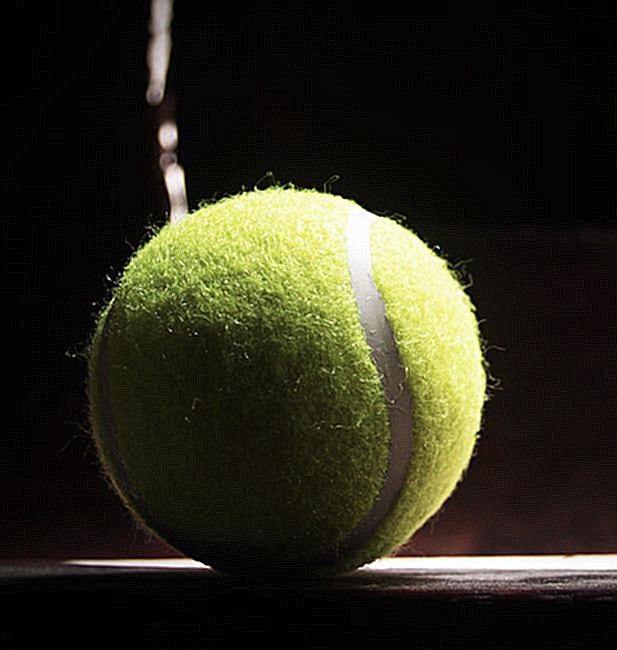As tennis enthusiasts, we’re often captivated by the incredible matches and moments of brilliance displayed by players. However, there’s a fascinating science behind tennis that is rarely explored – the aerodynamics of tennis balls. In this article, we’ll delve into the mysterious world of tennis ball flight and uncover the role of yellow fuzz in the ball’s aerodynamics.

When a tennis ball is in flight, the air molecules near its surface stick to it, creating a thin layer that pulls on the surrounding airflow. The balance between the inertial and viscous forces in the flow determines how the air moves around the ball and the drag value of the object. The drag is primarily generated by the boundary layer separating from the back of the ball, creating a viscous wake with tiny air vortices that alter the pressure in the projectile’s wake.
Surprisingly, the majority of drag on a tennis ball comes from pressure drag rather than friction drag. The pressure drag is determined by the boundary layer separation location on the ball. As the ball pierces the air, an orderly layer (laminar flow) forms on its front end, which eventually breaks down, separates from the surface, and generates the wake of the ball’s flight.
For smooth-surfaced balls, the separation occurs just before the apex of the ball, causing drag pressure from the wake to form earlier. However, for roughened and spinning balls, the separation is delayed enough that it forms on the other side of the ball’s apex, keeping the ball on course for longer. Experiments have shown that a roughened ball transitions to turbulent flow at a lower Reynolds number than a smooth ball, making it more aerodynamic.
Wind tunnel experiments reveal that new tennis balls, with their fuzz intact, experience disrupted airflow that increases their flight aerodynamics. However, as the balls are used, the fuzz becomes a variable that can either increase or decrease drag. Worn-down balls (with reduced nap) experience a decrease in drag, while fluffy balls experience an increase.
In real-life tennis matches, few shots are completely flat (without spin). Spin is a crucial aspect of the game, and when it’s factored into the analysis of a ball’s aerodynamics, the calculations become complex due to the introduction of Magnus forces. These forces generate sideways pressure that causes the ball to deviate from its non-spinning trajectory, like Rafael Nadal’s signature heavy topspin shots.
Interestingly, studies by Rod Cross and Crawford Lindsey have shown that real-world drag data differs from wind tunnel data, and lift plays a more significant role than drag in a tennis ball’s trajectory. This finding adds another layer to the ongoing mystery of tennis ball aerodynamics.
So, the next time you watch a thrilling tennis match, take a moment to appreciate the captivating science behind the flight of the humble tennis ball, as it continues to intrigue and mystify us.
